Northern Vietnam
Hanoi Captital
Mai Chau
If you have to choose only one place to visit in Ha Giang, for many tourists, it will be the Nho Que River. The year-round emerald waters here carve a path through towering karst peaks, creating a landscape so breathtaking it feels like a scene straight out of a fantastical film.
The Nho Que River stands out as a top scenic wonder of the Ha Giang Karst Plateau Geopark, leaving a strong impression with its captivating beauty. Along with Ma Pi Leng Pass and Tu San Canyon, Nho Que River is on the bucket list of every travel enthusiast to the Ha Giang Loop.
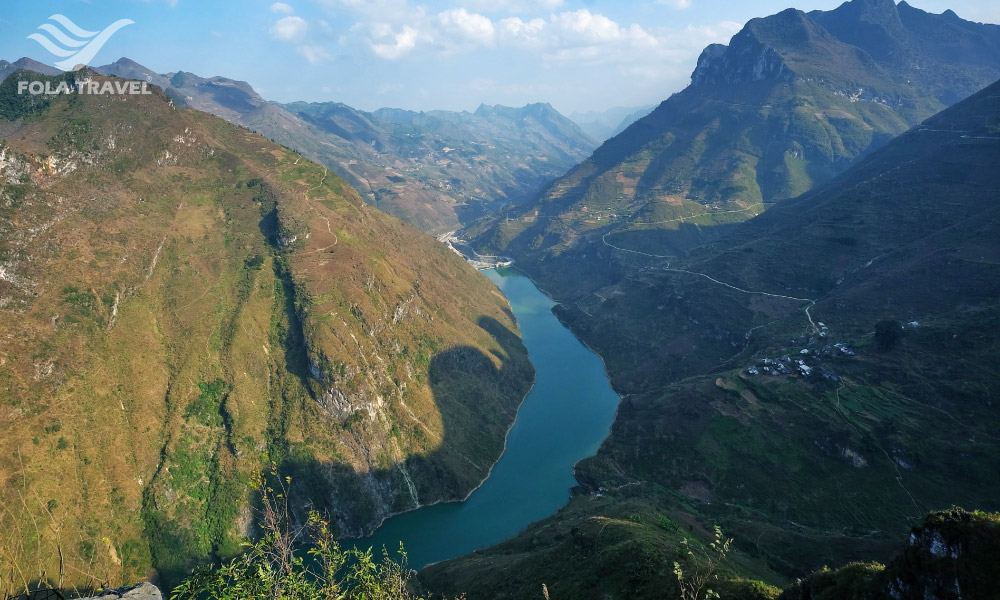
With the upper stream in China, the Nho Que River flows gracefully through Dong Van and Meo Vac Districts in Ha Giang, before joining the Gam River in Cao Bang Province. Taking a boat on the Nho Que allows you to grasp its breathtaking landscape: towering cliffs rise sharply from the water, framing the vast blue sky, gently moving clouds, and slowly drifting waters winding through valleys.
Beyond its important geological and tourism value, the Nho Que River is also the main water source of local people for their daily needs and agriculture.
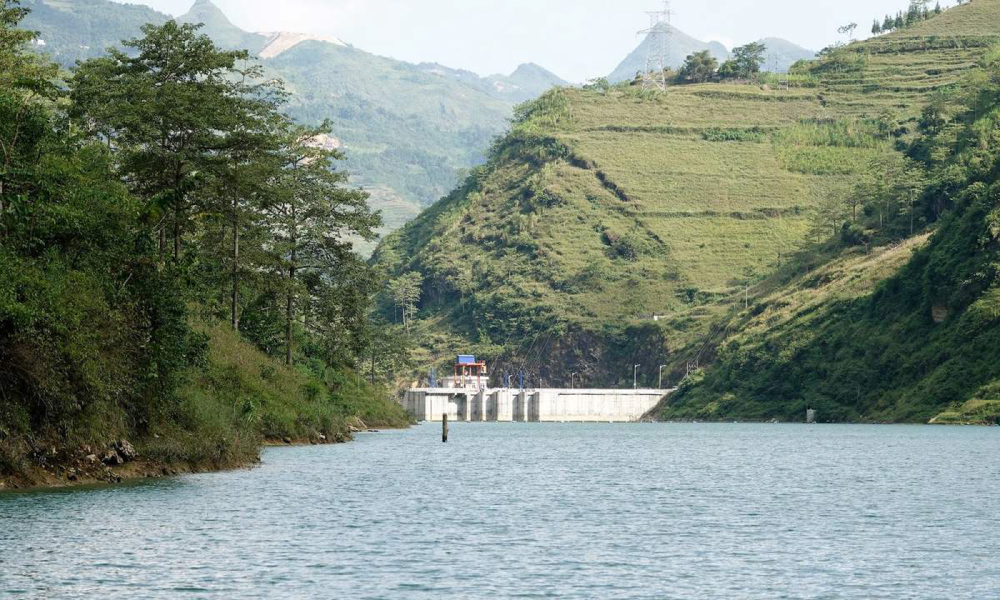
Coming to the villages around Nho Que, you will hear the locals tell a thrilling fairy tale about the origin of this beautiful river.
Legend has it that long ago, Ha Giang’s mountains were undivided, yet the river’s strong waters became stagnant as they flowed down. This caused one side of the mountain to flood while the other lay dry and bare.
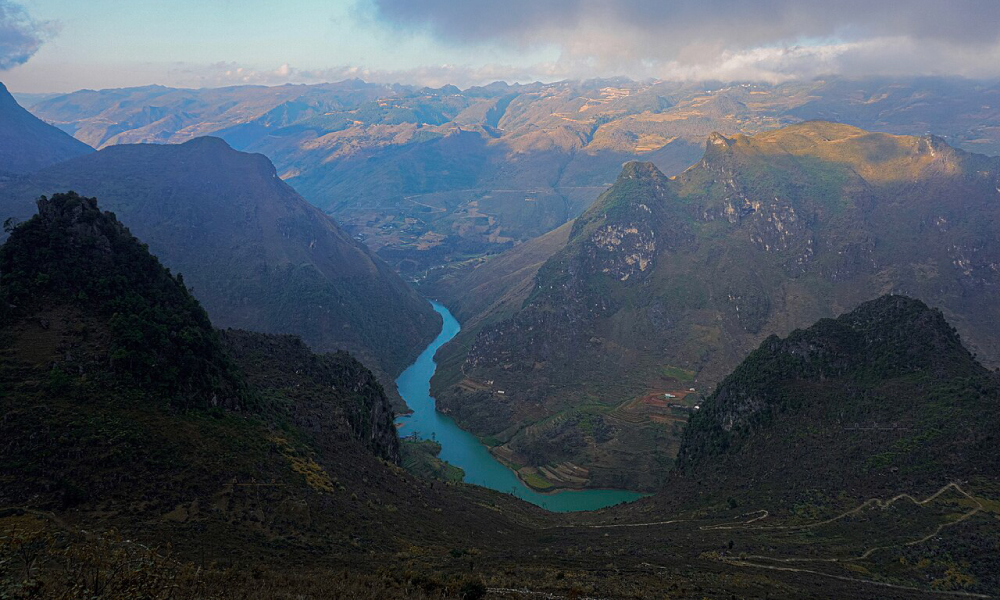
Concerned for the land, the local River God asked the Mountain God to shift aside and let the waters flow. But the Mountain God lay still, pretending to sleep through countless seasons. Outraged, the Lightning God drew his sword and split the Mountain God in half, freeing the waterflows. Everywhere the water touched, grass and trees revived, painting both sides of the mountains in vibrant green.
Over centuries, these waters cut their way through the rocky landscape, becoming the famous Nho Que River, dividing the Sam Pun and Ma Pi Leng mountain ranges.

Nestled alongside Happiness Road (National Highway 4C), amidst Ha Giang’s rugged mountains, the Nho Que River brings a poetic charm to the wild natural landscape here. Through the seasons, Nho Que River stays a clear turquoise hue, appearing like a soft, winding silk strip among the mountains.
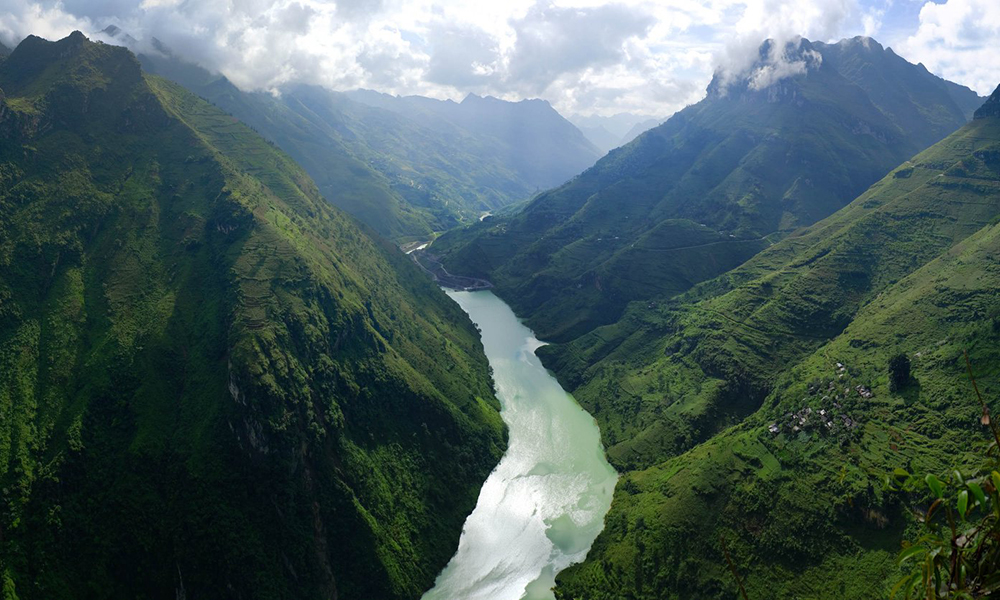
The most spectacular view of the Nho Que River is at Tu San Canyon, nestled at the foot of Ma Pi Leng Pass. This section attracts countless visitors with its unique landscape: towering mountains harmonize with the graceful river, creating one of the deepest and most beautiful canyons in Southeast Asia. A boat trip on the Nho Que, optionally enhanced by renting ethnic costumes on the bank, promises magnificent and picture-perfect moments for tourists.
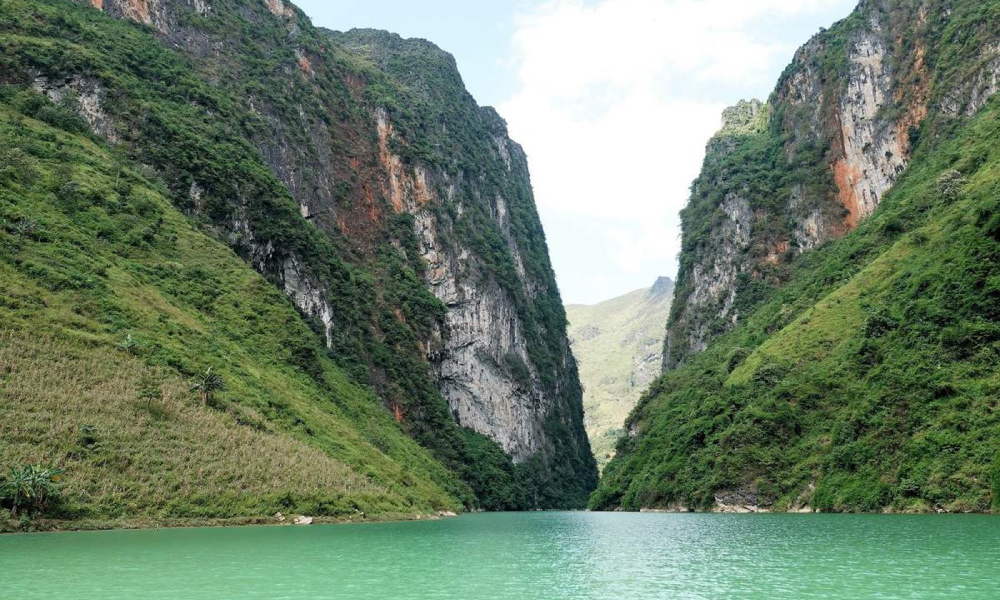
Besides boating, visitors can also admire the Nho Que River from Ma Pi Leng Pass, a legendary route beloved by adventure enthusiasts. Walking on Ma Pi Leng Summit amidst the misty fog, you can look down into the deep abyss and behold the emerald Nho Que River winding below, a truly majestic display of nature’s beauty.
The Nho Que River is nestled within Ha Giang’s Meo Vac and Dong Van Districts. To reach it from Hanoi, travelers can take a bus or motorbike to Ha Giang City, then continue along National Highway 4C for around 150 kilometers directly to the Nho Que River’s scenic spot.
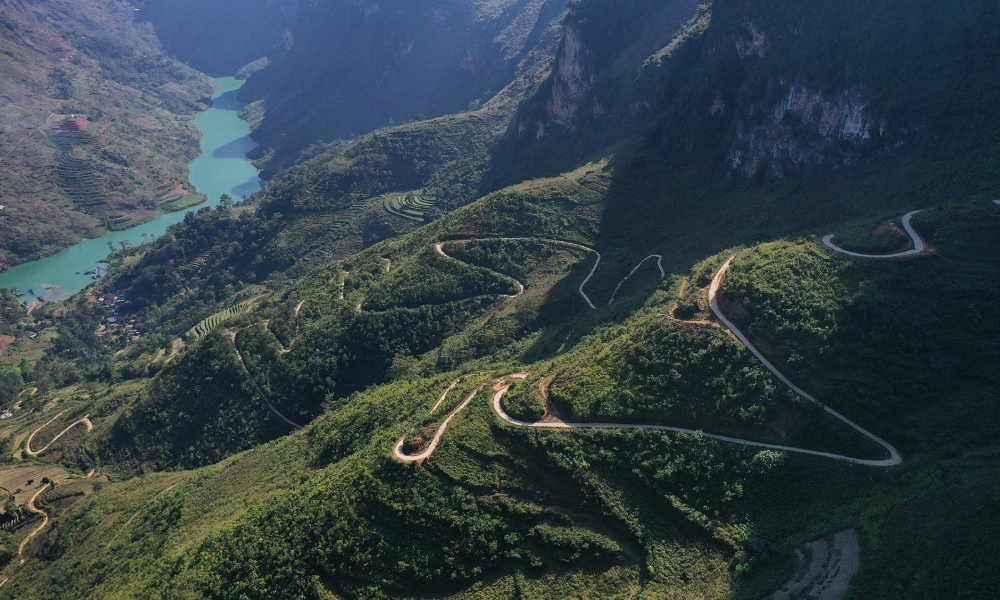
Since the mountain passes here have many sharp turns and steep slopes, booking a guided Ha Giang tour is a highly recommended option for many tourists.
Fola Travel’s Ha Giang Loop tours are designed for a seamless experience, providing convenient pick-up/drop-off services from both Ha Giang and Hanoi, complete meal and accommodation arrangements, and professional easy-riders on the road, ensuring you have a safe, comfortable, and enriching journey.
To experience the breathtaking Nho Que River by boat, visitors can head to one of two convenient stations: Xin Cai in Meo Vac or Pai Lung in Dong Van. From these points, several options await:

Nho Que has a charming beauty all year round, capturing the hearts of fans.
The most popular times for visitors are typically fall, when buckwheat flowers bloom along its banks, and spring, known for its cool, dry weather. Spring also offers a crystal-clear river surface, beautifully framed by the pink peach and white plum blossoms, a wonderful scene you should not miss.
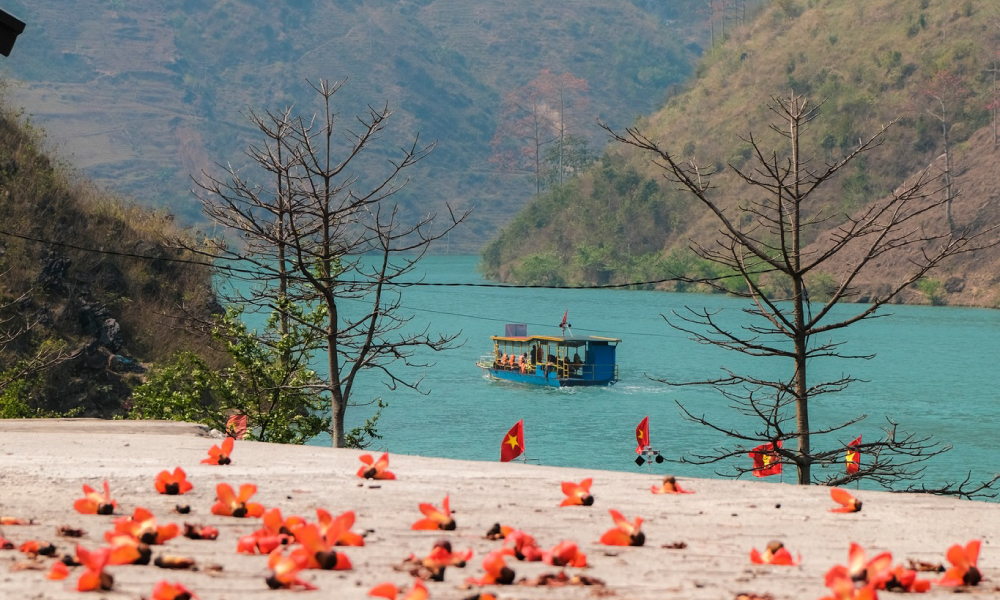
Tourists should avoid going to Ha Giang during the rainy season (June-August), as the mountain roads at this time are slippery and dangerous, and at Nho Que River, the water often turns muddy.
Ma Pi Leng, Ha Giang’s most magnificent pass, offers tourists a panoramic view of the Nho Que waterway snaking through the mountains and forests of Ha Giang.
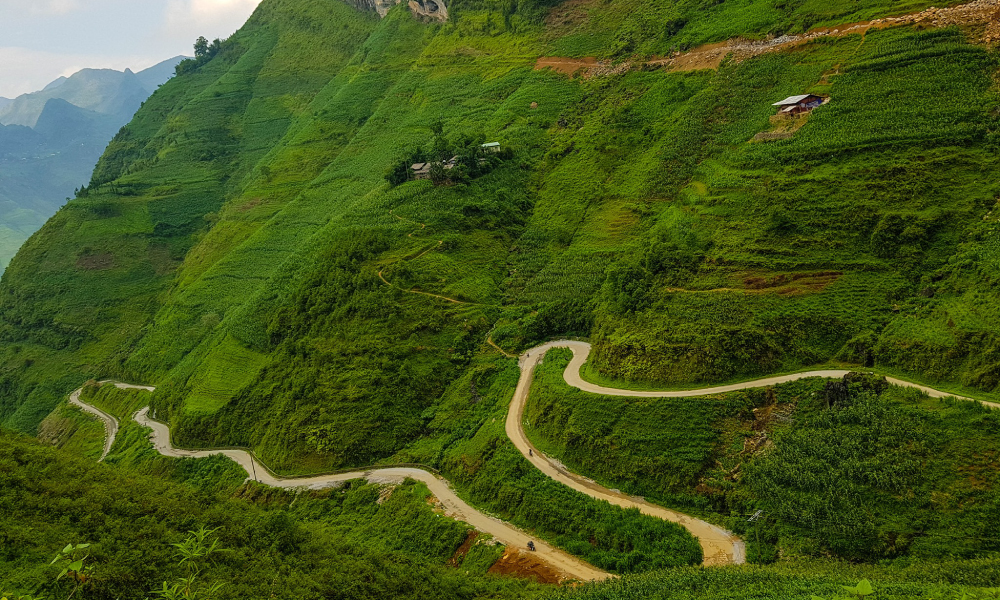
Tu San Canyon is a portion of the Nho Que River that narrows between two high mountain ranges. The emerald green of the river merges with the green of the mountains, as if nature had lovingly painted this scene.
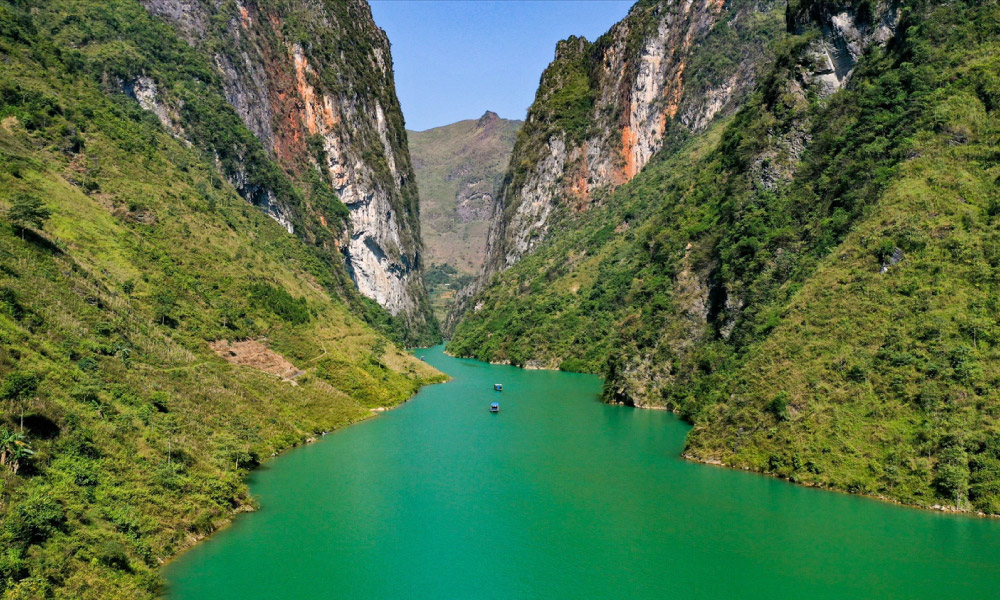
Dong Van Ancient Town impresses with its classic charm and ancient buildings with tiled roofs. The lovely splendor of the Ha Giang highlands will make you feel as if you’ve stumbled into an old movie.
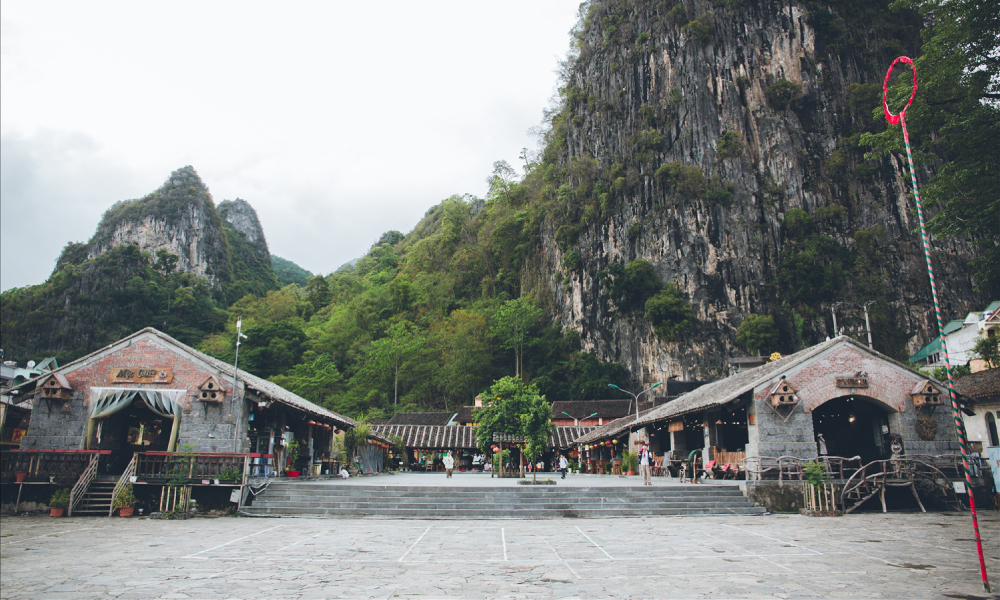
Only 13 kilometers from Dong Van Ancient Town, the Vuong’s Palace (king of the Mong ethnic group) is a destination with many important historical and architectural values, where you can learn more about the story of this ethnic minority.
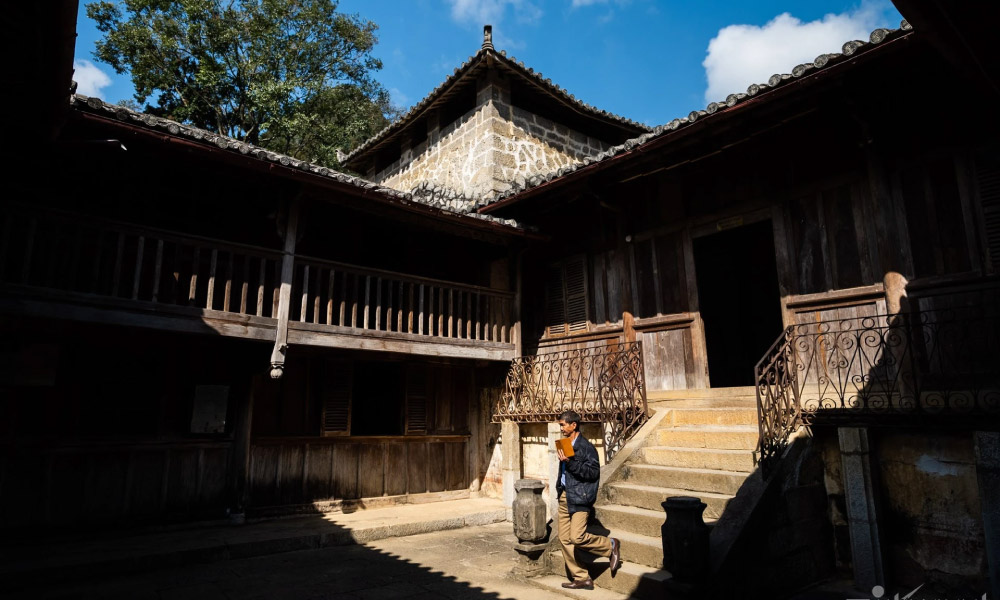
Pa Vi Village in Meo Vac is a popular stop for tourists on the Ha Giang Loop. Located in a peaceful valley, this village stands out with its unique peach blossom-shaped architecture, where you can participate in many cultural events imbued with the identity of the mountain people.
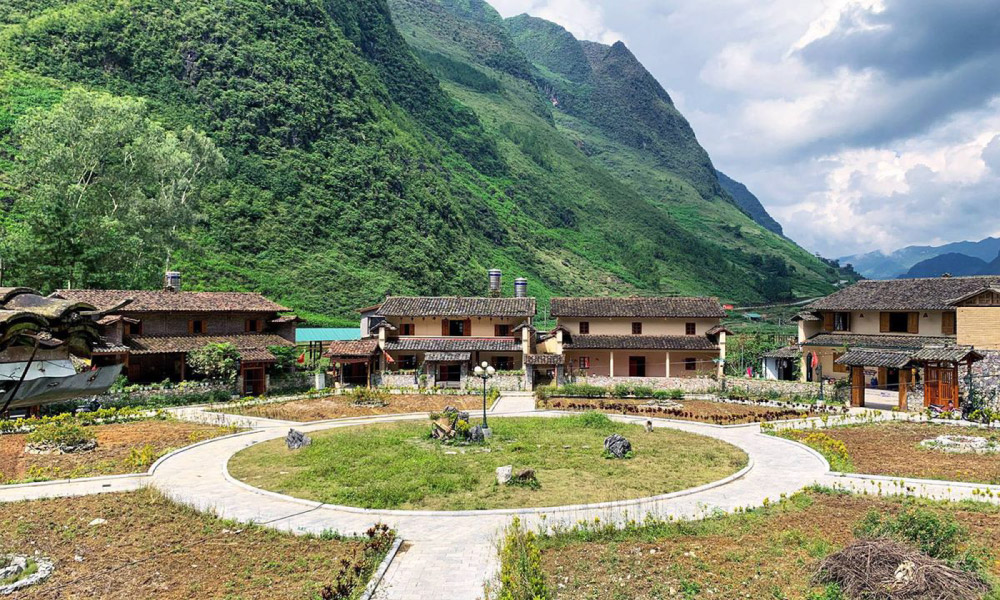
SHARE YOUR OPINION